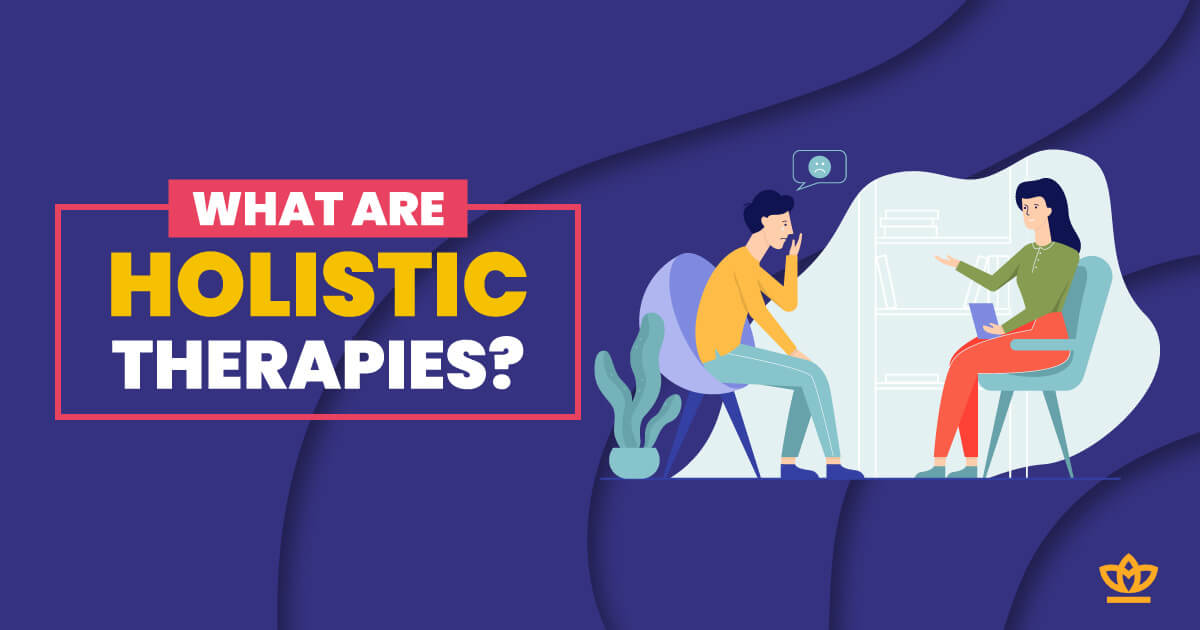What Is Holistic Therapy?

The following blog has been reviewed by a Psychologist. If you are reading the blog on a mobile phone, you can see the reviewer’s profile at the end of the blog. Please see our editorial policy here.
Holistic health is an amalgamation of mind, body, and spirit, where an individual takes care of themselves to balance different aspects of life. Holistic therapy is a form of healing that aims at treating the person as a whole and not just the disease they suffer from. The fundamental of holistic therapy is to obtain an overall balance of life through its various practices. Pursuing it with the help of a mental health professional addresses the issues faced by a person in every aspect of life. It also helps promote self-acceptance in entirety.
A Brief History of Holistic Therapy
Holistic approach addressing ailments of a human body has been around for more than 5,000 years since the ancient Greek era. Considered as the Father of Modern Medicine, Hippocrates put an emphasis on the holistic approach to medicine for treating all patients keeping their mind and body’s ability to heal as its core. It is also reflected in the modern Hippocratic oath of medical professionals which consists of understanding the patient’s health, the connection between their social and natural environments, independence of mind and body, and appropriate interventions for their betterment.
While during the ancient Greek era, the focus was establishing an individual’s equilibrium; mind, body, and soul were treated as separate entities in the early 20th century world. It wasn’t until the late 20th century around the 1970s that people in medical professions started treating issues to improve their patient’s overall health and quality of life. 1975 was the year when the First National Conference was conducted on holistic health to bring interconnection between medicines and therapies.
Today, practitioners of holistic therapy view their patients as a ‘whole’ being to provide treatment and care, which typically synchronizes with an individual’s thoughts, emotions, experiences, and spiritual understanding.
What Are Holistic Therapies?
Holistic therapy is a form of treatment focusing on an individual’s recovery in a comprehensive way by delving into complex issues like anxiety, depression, and addiction. It helps find the root cause of the ailment and addresses the confluence of its multiple contributing factors instead of just focussing on the symptom treatment. It is being seen that people are turning towards the holistic approach for better treatment of their diseases when the traditional medicines are not successful.
You may also like to read: How Understanding the 3 Zones of Recovery Can Help Revitalise Your Recovery
Practitioners of holistic therapy delve deep into the issue of an individual, thus exploring their relative psychological aspects causing the suffering. For instance, in the case of trauma, stress and anxiety are common in an individual facing other ailments, which can also contribute to chronic pain. A professional therapist will look into such aspects to gain a deeper understanding of its root cause and suggest preferred treatments or mental and physical activities to create a balance between mind and body.
However, holistic therapies do not exclude modern medicines, it is rather seen as an addition to traditional treatment modalities. The basic idea behind this type of therapy is also frequently used in wellness practices, which takes numerous individual forms like meditation, guided imagery, yoga, massage therapy, and acupuncture.
How Does Holistic Therapy Work?
It is assumed that the conscious is an integration of the person as a whole, including their mind, body, spirit, and emotions. Holistic therapy attempts to create awareness of their interconnection inside an individual by using various techniques. The final goal of this type of therapy is to develop a sense of individual understanding at different levels, often leading to improvements in self-esteem and awareness.
The concept of mindfulness is gaining momentum in holistic therapies that attempt to gain full awareness of oneself inside an individual suffering from various ailments, including depression, anxiety, or stress. Once self-awareness is achieved, distress causing elements inside an individual become easy to release. Relaxation, bodywork techniques, and visual imagery are common assistants in the process. Some of the bodywork techniques used as a gateway to self-awareness are yoga, tai chi, reiki (transfer of energy via touch), breathing relaxation, and massage.
The aim of following such techniques in holistic therapies is to connect the mind and body of the suffering individual to the influence energy fields that affect mental and physical health. Techniques like yoga, breathing relaxation, and massage have proven results in reducing mental distress. However, reiki and tai chi are considered as pseudoscientific and are only opted as complementary treatments. If considered standalone, they may or may not have effective results in improving an individual’s psychological and physical health.
Types of Holistic Therapy Techniques
Chronic pain of an individual consists of physical and mental aspects as both are intertwined. As the brain is the control center of a human body, creating a balance or sense of healing in it becomes of prime importance while dealing with physical pain for faster improvements.
While holistic therapy alone may not be for people suffering from physical pain, its various techniques work towards improvement of emotional or psychological affliction that are responsible for inducing chronic pain.
Some of its various techniques are:
- Mindfulness Meditation: It aims to bring a sense of calm in life by decreasing depression, anxiety, and stress. It also helps in improving sleep pattern, mental alertness, and memory of an individual.
- Yoga: While the aim of yoga is similar to mindfulness, it mainly focuses on breathing patterns through various yoga positions, which further helps improve strength and flexibility. It is a form of relaxation through bodily movements. Apart from calming the mind, it often helps reduce chronic pain.
- Guided Imagery: When a person thinks about anything, it possesses the power to trigger the same effect of psychological response as seen in reality. It is also the reason why a person feels anxious about an upcoming presentation or project, while induces a sense of calm thinking about a celebration. Through guided imagery, one can bring peace and positivity in the thought processes which evokes relaxation of mental and physical self. It can also work as a tool to control stress and pain.
- Aromatherapy: It uses essential oils extracted from natural plants to induce harmony between an individual and its surroundings. It aims at promoting healing of mind and body by activating various sensory receptors in our body through the smell of essential oils. Lemongrass oil, camomile, peppermint, and sage oils are commonly used for aromatherapy.
- Acupuncture: The origin of acupuncture dates back to thousands of years which aims to stimulate various pain or pressure points for relief. Its use can also be found in various ancient medicines. Over the years, various studies have shown positive effects of acupuncture on chronic pain, specifically in the areas of neck, back, and knee. It is also effective for persistent headaches. In ancient beliefs, acupuncture helps restore mind-body balance by circulating energy, also known as chi, through needles. It increases the release of endorphins in the brain which helps prompt internal relief.
Some of the mental health issues treated with holistic therapy techniques are:
- Depression
- Anxiety
- Mood irregularities
- Insomnia
- Stress
- Trauma
- Somatic ailments that involve significant focus on physical pain
Holistic Therapy for Holistic Healing
Over the years, holistic therapy has achieved positive results in the treatment of stress-related issues, anxiety disorder, trauma-related disorder, and various other mental health issues. However, there is a limitation to holistic healing in terms of its own focus. Since there is no defined parameter of knowing if an individual has reached the required level of balance between mind and body, it largely depends on an individual’s belief and veracity.
Moreover, if one suffers from chronic pain, holistic therapy alone may not be helpful in its treatment. It is often recommended to consult doctors simultaneously while pursuing holistic therapy. Both combined, one can achieve the desired results. Besides, one must always choose a certified professional therapist who can guide an individual in the right direction.
To achieve holistic healing or healing as a whole, it must be approached in alliance with traditional treatment modalities. If done in its true sense, a person can accomplish major benefits within a short period.
Sources —
https://www.wikidoc.org/index.php/Holistic_health
https://thewell.northwell.edu/well-informed/5-holistic-therapy-techniques-you-should-try-today
https://www.ncbi.nlm.nih.gov/pmc/articles/PMC3068720/
https://www.nccih.nih.gov/health/complementary-alternative-or-integrative-health-whats-in-a-name
https://www.ncbi.nlm.nih.gov/pmc/articles/PMC5493721/















